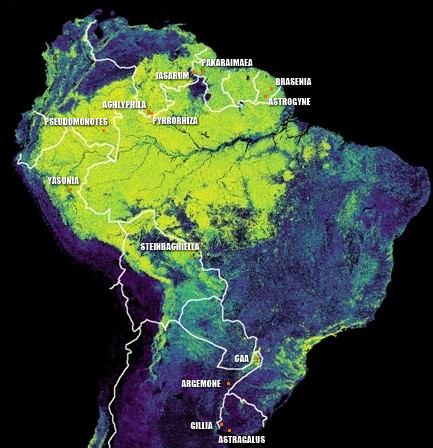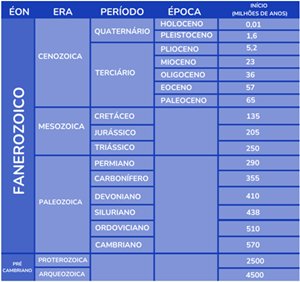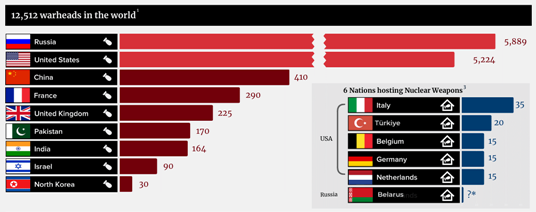The aim of this post is to provide insights into angiosperms, especially South American ones, absent in Brazil, regarding unique and new habits. To achieve this, we'll use as a reference the Angiosperms of Brazil: a habit-based classification proposal post (SEE), elaborating on the 50 types of habits proposed in that text for Brazil.
GENERA WITH REMARKABLE DIVERSITY AFTER BRAZIL
Many genera reach their peak of morphological diversity in South America. Worldwide, Euphorbia is by far the most diverse genus in terms of morphological evolution. In South America, Euphorbia doesn't exhibit such a high diversity, with this position being taken by Phyllanthus. Below, five other genera also reach peaks of morphological diversity on the continent, but many of the forms contributing to this scenario are not found in Brazil.
Valeriana L. (Caprifoliaceae) - considered here as the most morphologically varied genus in South America, it includes 'agavoid' rosettes with long inflorescence of V. plantaginea Kunth (Ecuador and Peru) or short as in V. rigida Ruiz & Pav. (Colombia to Bolivia) and in the twisted leaf species V. macrorhiza Poepp. ex DC. (Cono Sur), upright microphyllous herbs such as V. microphylla Kunth (Colombia to Peru), prostrate herbs with simple leaves like V. glechomifolia F.G. Mey (Brazil) or cut like V. philippiana Briq. (Cono Sur), succulent rosettes like V. henriciii (Graebn.) B. Eriksen (Ecuador and Peru) and V. moyanoi Speg. (Cono Sur), herbaceous lianas such as V. scandens L. (all tropical America) or woody like V. clematitis Kunth. (Mexico to Cono Sur), and type trees like V. tajuvensis Sobral (Brazil).
Baccharis L. (Asteraceae) ‣ highly diverse genus, ranging from acaulescent species from saline habitats in the Andes to vigorous trees in tropical forests, as seen in Heiden & Bonifacino (Head Topics, 2021).
Draba L. (Brassicaceae) has all diversity of size in n South America, showing tremendous variability in the growth habit, though most of the paramo taxa have woody lower stems and often form subshrubs; all typically woody lower stems are restricted to South America (Al-Shehbaz, Annals of the Missouri Botanical Garden, 2018).
Brocchinia Schult. f. ex Schult. & Schult. f. (Bromeliaceae) ‣ by Givnish et al. (Molecular Evolution and Adaptive Radiation, 1998), this genus has the greatest diversity of means of capturing nutrients among all angiosperms at the generic level, and of morphological variation among Bromeliaceae, and includes unbrazilian carnivores (B. reducta Baker), myrmecophytes (B. acuminata L.B. Sm.), (possible) nitrogen fixation by symbiosis (populations of B. tatei L.B. Sm. in the north of Gran Sabana), tank epiphytes (B. hitchcockii L.B. Sm.), terrestrial (B. gilmartiniae Varad.), semi-arboreal (B. micrantha (Baker)Mez., B. paniculata Schult.f., the latter occurs in Brazil), paludiculous (B. melanacra L.B. Sm. (fire resistance), B. prismatica L.B. Sm. and B. steyermarkii L.B. Sm.) and conventional terrestrial forms; in addition, it includes some of the smallest (5 cm) and largest (8 m) bromeliads, arborescent rosettes and lianoid species.
Oxalis L. (Oxalidaceae) ‣ Oxalis includes in South America, after Brazil, a huge amount of habits, including woody shrubs, cushions, lianas and succulent prostates.
ALL 50 HABITS IN BRAZILIAN ANGIOSPERMS
South America also has 49 unbrazilian families, together containing 83 genera and 445 spp. in continent (c. 2% of South American genera), of which Conanthera, Zephyra (Tecophileaceae), Lapageria (Philesiaceae), Gomortega (Gomortegaceae), Pseudomonotes (Dipterocarpaceae), Schreiteria (Montiaceae), Halophytum (Halophytaceae), and Grahamia (Anacampserotaceae) are national endemisms.
10 of the exxofamilies have genera restricted to South America (Atherospermataceae, Gomortegaceae, Philesiaceae, Tecophylleaceae, Lardizabalaceae, Saxifragaceae, Nothofagaceae, Dipterocarpaceae, Corsiaceae, and Collumeliaceae).
The largest speciose families are mainly in Montiaceae (98), Brunelliaceae (61), Actinidiaceae (49), Grossulariaceae (51), Polemoniaceae (37), Hydrangeaceae (14), Phrymaceae (13), Nothofagaceae (10), Frankeniaceae (9), Dipentodontaceae (9), Tecophileaceae (9), Myricaceae (8), Misodendraceae (8), Saxifragaceae (7), Juglandaceae (6), Papaveraceae (5) and Collumeliaceae (5).
Zosteraceae and Berberidopsidaceae on the continent are restricted to Chile; Koeberliniaceae to Bolivia; Melanthiaceae to Venezuela; Nelumbonaceae, Dipterocarpaceae, Hamamelidaceae, Fagaceae, Cytinaceae and Mitrastemonaceae in Colombia. Gomortegaceae is endemic to Chile and Halophytaceae is endemic to Argentina.
Huge South American families absents in Brazil are the worldwide speciose Fagaceae (969), Papaveraceae (775), Dipterocarpaceae (695), Saxifragaceae, Actinidiaceae (448), Montiaceae (275), Polemoniceae and Grossulariaceae (192). All exxofamilies has 3 or fewer genera in South America; exceptions are Polemoniaceae (12), Montiaceae (7) and Saxifragaceae (5); 28 has only a single genus, 12 only two genera, three only three genera.
Smallest plants in their groups in South America, absents in Brazil, includes Viola liliputana H. H. Iltis & H. E. Ballard (Violaceae, endemic to Peru, possibly the second smallest known terrestrial dicot), Lysipomia mitsyae Sylvester & D.Quandt (Campanulaceae, 1.8–4(–5.5) mm tall, Cuzco region, Peru, possibly the smallest terrestrial plant worldwide), Blossfeldia liliputiana Werderm (smallest Cactaceae, from S Bolivia to N Argentina, only about 10-12 mm in diameter at maturity), Begonia elachista Moonlight & Tebbitt (Begoniaceae, lowlands of Peru, is the world smallest species of genus) and Raddiella vanessieae Judz. (French Guiana, is smallest known bamboo, flowering at only 2 cm high).
Largest plants in thier groups in South America but absents in Brazil includes Ceroxylon quindiuense (Karst.) H.Wendl. (Arecaceae, tallest of all Monocots worldwide, Andes of Colombia and northern Peru), Hydrangea serratifolia (Hook. & Arn.) F. Phil. (Hydrangeaceae, the largest woody liana in Chile, and possibly in Argentina); Aosa grandis (Standl.) R.H.Acuña & Weigend (Loasaceae, Panama and Colombia); Heliamphora ionasi Maguire (Sarraceniaceae, endemic to two tepuis in E Venezuela, has the largest pitchers in the genus, which can be up to 50 cm in height), Spergularia manicata (Skottsb) Kool & Thulin (San Ambrosio Island, off the coast of Chile, in the only member of Caryophyllaceae that may grow to a small tree); Oxalis gigantea Barnéoud (Chile, is largest species of genus); Sobralia altissima D.E. Benn. & Christenson (Orchidaceae, Peru, is tallest of all orchids, reaching up to 13.4m tall); Begonia parvifolia Liebm. from Costa Rica to Peru is possibly the tallest member of this genus in New World; and Tessmmanniathus heterostemon Markgr. (up to 45m in Peru and Ecuador, tallest member of Melastomataceae in New World).
Only one of the nearly 400 epiphytic Ericaceae of the neotropics occurs in Brazil: Satyria panurensis (Benth. ex Meisn.) Hook. f. ex Nied. Unique epiphyte types in South America afer Brazil among their families include Burmannia kalbreyeri Oliv. (Burmanniaceae) from Costa Rica to Peru and Venezuela, non-holomycotrophic (NYBG); Voyria aphylla (Jacq.) Pers. and V. spruceana Benth. (Gentianaceae) have already been collected growing as epiphytes at about 30 m in height in Colombia (Merckx, Mycoheterotrophy: The biology of plants living on fungi, 2013). Solanum morelliforme Bitter & Münch (Solanaceae) is the only epiphyte species in sec. Petota ('potatoes'), and is only described for two areas: S Mexico to Honduras, and forests near Lake Titicaca, in Bolivia and Peru (Jansky et al., Front. Plant Sci., 2016). The two species of Cochliostema Lem. (Commelinaceae, Central America to Ecuador) are the only ones in the family with bromeloid habit as tank epiphytes (K.Kubitzki, vol IV, 1998, p. 110). Worldwide, it's worth noting the unique mention of the only epiphytic Valeriana worldwide, V. rudychazaroi, endemic to Veracruz state in Mexico (SEE).
Of 423 spp. absent in Hemiparasitic Santalales non-Olacoid in Brazil, 267 (~ 2/3) are Phoradendron, Dendrophtora or Psittacanthus. Endemic genera, despites Brazil, occur only in Chile (Desmaria and Notanthera).
Passiflora L. (Passifloraceae) includes 9 spp. as true trees, all from Colombia but one (in Peru), 4 endemics, remaining up to Costa Rica, Venezuela, Ecuador and Peru; P. lindeniana Planch. ex Triana & Planch up to 20m high. Ipomoea includes six true trees (up to 15m tall in a mexican endemic), all from Mexico, I. wolcottiana Rose, Gard. & Forest and I. pauciflora M. Martens & Galeotti up to Peru in South America. Aristolochia arborea Linden is the most arborescent species of this genus, known from Mexico to Colombia, reaching upto 4m tall (Isnard et al., IJPS, 2021). In Cistaceae, Pakaraimaea dipterocarpacea Maguire & Ashton shows a taller tropical tree from Venezuela and Guyana, an aberrant genetically isolated divergence from the rest of the family, which are mostly shrubs or herbs mostly concentrated in cold regions Northern Hemisphere.
Herbs in South America groups absents in Brazil at herbal habit includes Schoepfiaceae, whore herbs occur only in Quinchamalium Molina (C & S Andes, Angios Bergianska), and Bignoniaceae, where few herbs occur, with New World members belonging Tourretia Foug. (1) from Mexico to Bolivia and Eccremocarpus Ruiz & Pavon (5) from Colombia to Cono Sur, these herbaceous vines, and Argylia D. Don. from Peru, Bolivia, Chile and Argentina, true herbaceous.
Unique lianas among their families in South America absents in Brazil includes in Vasconcellea horovitziana (V.M. Badillo) V.M. Badillo (Caricaceae) from Ecuador; in Oxalis L. (Oxalidaceae), where only two lianes occur, both from South America, O. lotoides Kunth and O. medicaginea Kunth, both native to Venezuela to Peru. At Brassicaceae, lianoids occur only in Heliophila from South Africa, some Australian Lepidium, and in Cremolobus from South America.
Citing only South American genera absent in Brazil with xylopodia, there are woody rhizomes in Myricaceae (Morella); lignotuber in Asteraceae (Podanthus), Monimiaceae (Peumus); and roots crown in Proteaceae (Gevuina). Pitraea Turcz., from Peru and Bolivia to Argentina and Chile, is unique in Verbenaceae in being a tuber-bearing perennial herb; caudiciforms forms in continent absent in Brazil includes the uncommon dendroid habit in Bromeliaceae, as dendroid palm-like Brocchinia micrantha (Baker) Mez. (SEE), and vellozioid B. uaipanensis (Maguire) Givnish; ephedroid habit in South America apart Brazil includes Neosparton and Diostea (S Bolivia, Chile and Argentina) species in Verbenaceae; ground rosettes in South American lineages absents in Brazil includes the bizarre forms in Valeriana rigida and Valeriana convallarioides; caulirosules are extreme emblematic in Asteraceae from Andes from Colombia and Venezuela.
In South America occur 280 cushions in (38:)86 genera among 20 orders, 18 if them in Eudicots. By country, the diversities are Venezuela (10:12/21 spp.), Colombia (13:20/38 spp.), Ecuador (18:28/53 spp.), Peru (22:35/72 spp.), Bolivia (22:34/64 spp.), Argentina (31:67/194 spp.), and Chile (30:59/158 spp.), by Almanaque Z (SEE).
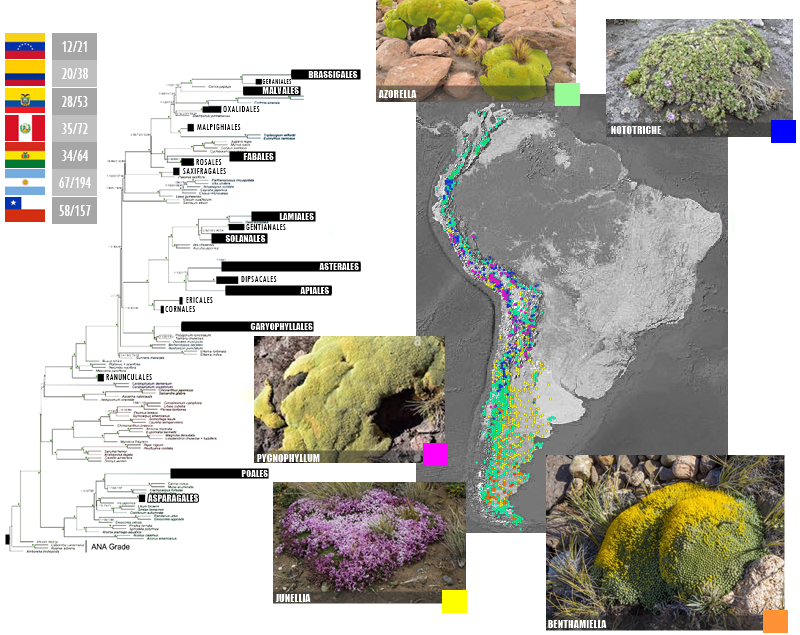
|
| INFOGRAPHIC OF SOUTH AMERICAN CUSHIONS, PHYLOGENETIC DISTRIBUTION AND HIGHLIGHT FOR THE 5 LARGEST GENERA |
Among succulents in New World, few are in Aizoaceae and Asclepiadoideae. Mexico has high diversity in Crassulaceae, Agavaceae and Euphorbiaceae , with few members in South America. In addition to the Cactaceae, are the Crassulaceae with Sedum L. in South America, represented by the rosettes (of obsolete Echeveria DC.) and the erect or prostate forms (of Sedum s.s. and obsolete Villadia Rose); 26 of the 38 spp. of this group in South America are endemic to Peru, and can be seen for Cuzco plants in Pino, Galiano, Vargas & Kamm (Cactus and Succulent Journal, 2017) and for Cajamarca plants in Pino & Cieza (Haseltonia, 2009); in Solanaceae, succulent forms are found only in Sclerophyllax Miers. from Argentina, Paraguay and Uruguay, like S. cynocrambe (Griseb.) Griseb.; and in Nolana L. from Peru, Chile and Galapagos, like
N. galapagensis (Christoph.) Johnst. (K.Kubitzki, vol. XIV
, 2016, pg. 296). Monocots succulents in New World absents in Brazil are in Asparagaceae and Amaryllidaceae (Rauhia Traub. from Peru). The work of Pino et al. (Haseltonia, 2012) discusses a group of succulent Peperomia (Pipearceae) with transparent leaves, restricted to the south of Ecuador and the Peruvian Andes, formed by species that resemble some Crassulaceae or Caryophylalles; the work reinforces Peru as a succulent hotspot in South America.
Brazil has 20 spp. of Cecropia (Urticaceae), and Colombia has 37. All mangroves from New World occur in Brazil except Hilairanthus bicolor from Pacific coast from Mexico to Colombia, and the two Pelliciera Triana & Planch. However, with 8 spp. of mangroves, the country with the greatest diversity on species, genera and families in the continent is Colombia.
Salicornioid habit in South America, besides Brazilian member, occur in Suaeda L., Allenrolfea O. Kuntze, Heterostachys Ung. Sternb. and Mangleticornia P. W. Ball, G. Kadereit & Cornejo.
Among epiphytes/lianescent, aerial parasites, strongly represented in Loranthaceae and Santalaceae; South American members absent in Brazil includes only 11 genera: Misodendron, 5 in Santalaceae (Mida, Lepidoceras, Nanodea and Myoschilus, all from S Peru to Chile) and 5 in Loranthaceae (Desmaria, Notanthera in southern region, Tristerix and Aetanthus widely in Andes, and Maracanthus in northern continent).
Aquatic formas in South America absents in Brazil includes Brasenia schreberi J.F.Gmel. known in South America in Colombia, Venezuela and French Guiana, and Jasarum steyermarkii G.S.Bunting., a plant with permanently submerged leaves and is the only true example of this life form among neotropical Araceae, in rivers in E Venezuela (Bolivar state) and W Guyana (T. Croat, Aroideana, 1988). All South American sea grasses occur in Brazil except three mono-represented in the New World by Syringodium filiforme (Cymodoceaceae), Thalassia testudinum (Hydrocharitacae) and Heterozostera chilensis (Zosteraceae). Colombia and Venezuela have 5 genera and 6 species each, the South American hotspots being marine grasses, largely due to the great diversity of such forms in the Caribbean Sea.
In carnivorous of South America, only Pinguincula L. does not occur in Brazil; this genus includes 10 spp. in South America, 4 from Venezuela to Bolivia, and six in Argentina/Chile. Venezuela is the center of diversity for Brocchinia and Heliamphora.
Two holoparasitic lineage does not occur in South America: Rafflesiaceae and Cynomoriaceae. All generic lineages of holoparasitic plants in America Latina occur in Brazil except 20: Lennoa, Pholisma (Boraginaceae), Bdallophytum (Cytinaceae), Trirudopsis (Triuridaceae), Corynaea (Balanophoraceae), Mitrastemon (Mitrastemonaceae), Arachnitis (Corsiaceae), Degranvillea, Corallorhiza (5 holomycotrophs, from North to Cental America), Hexalectris (6, U.S.A. to Mexico), these Orchidaceae; Monotropa, Hypopitys (1, widely in northern Hemisphere up to Central America), Pterospora (1, U.S.A. to Mexico), Pyrola (only P. aphylla, Canada to Mexico), Sarcodes (1, W North America), these Ericaceae; Aphyllon Mitch. (21, New World), Conopholis Wallroth. (3, North and Central America), Epifagus Nutt. (1, Canada to Mexico), Eremitilla Yatsk. & Contreras (1, Guerrero, Mexico), and Kopsiopsis (Beck) Beck (2, Canada to NW Mexico) of Orobanchaceae. 17 of these occur in Mexico, and 5 in Colombia.
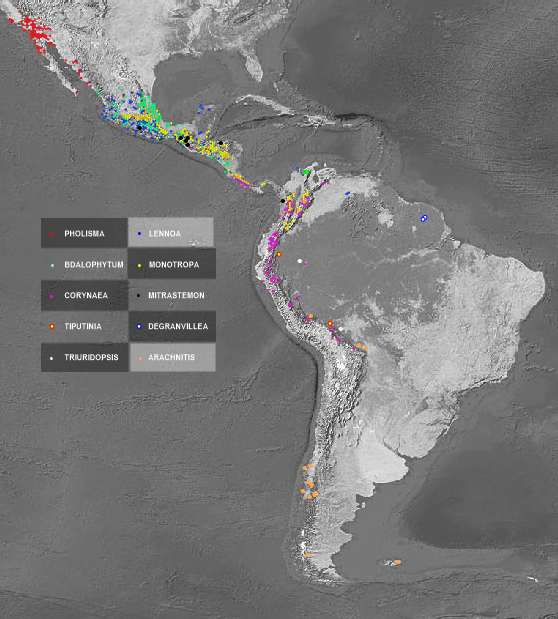
|
| AMERICA LATINA's UNBRAZILIAN ACHLOROPHYLLOUS GENERA EXCEPT 2 IN ORCHIDACEAE, 5 IN OROBANCHACEAE AND 4 IN ERICACEAE |
Isophasic parasitis is very rare, a feature that, in Santalales, is only known for in several species of Arceuthobium (North American A. americanum Nutt. ex Engelm., A. douglasii Engelm., and A. pusillum Peck, and the Himalayan A. minutissimum Hook.), but only on their most common hosts trees, in Phoradendron perredactum Rzedowski & Calderón, from Mexico (Kuijt, Acta Botanica Mexicana, 2011), and in Tristerix aphyllus (Loranthaceae) from Chile.




